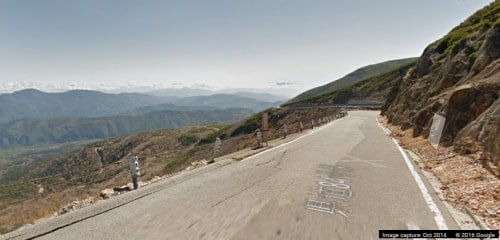Norikura, 100 Famous Japanese Mountains in Nagano
Norikura, on the border of the Gifu and Nagano prefectures is a 3005 meter tall volcano waiting to be visited by you! As one of the “100 famous Japanese mountains”, and said to be the easiest of the over 3000 meter high mountains to climb, it attracts many climbing tourists in the summer months. Accessible not only by hiking and climbing, the mountain can also be enjoyed by following the scenic “Norikura Skyline”.

The Norikura Skyline is Japans highest public road. The road is tolled and closed during the winter due to heavy snow. It is also recommended to use snow tires/chains even outside of winter.
Asides from hiking the mountain, the Norikura region also offers a few attractions and things to do at the base of the mountain in the area named “Norikura Kogen”. Here we find many beautiful hiking trails that lead to waterfalls and ponds, as well as easy access by bus to Shirahone onsen spa and Kamikochi.
How to get there
To access Norikura Kogen, take an Alpico line train from Matsumoto station to Shinshimashima station. The ride costs 700 yen, takes 30 minutes and an IC card cannot be used, so please buy a paper ticket.

After alighting at Shinshimashima station, we change to a bus headed to “Norikura Kanko Center”. The bus ride is rather long at 50 minutes, but the scenery is pleasant and the ride comfortable. The ticket costs 1350 yen, but a return ticket (from Matsumoto to Norikura) can be purchased for 3300 yen.
Around the Kanko center there are numerous pensions and hotels that offer overnight and of course meals too. The prices are reasonable, and can make a trip to nearby Shirahone onsen spa much more affordable…
Things to do in Norikura
In the warmer months, Norikura also can be enjoyed as a camping trip. A large campgrounds is located near the lake, complete with benches, BBQ’s and toilet facilities. Be warned though that the toilet facilities will be closed in the off season (whilst the mountain is inaccessible). Booking is required in the summer season, but you can organize to have tent and equipment supplied, as well as meals.
Many of the Norikura hikes take us through forests of “Shirakaba”. These white trees have a haunting nature to them and it gets pretty frightful when the sun starts to set.

Scattered at intervals along the hiking courses you will find these little bells and hammers. The sign reads something to the effect of “Please ring the bell 2 or 3 times before proceeding”. Why? Because bears! I confess I don’t know how this helps, but I don’t really look forward to running into a bear so best ring the bell…maybe they are conditioned to fear the bell? Maybe they just don’t like the sound? Please tell me~
The path turns into a boardwalk as we approach,
The Zengoro waterfalls! It’s a lot more spectacular in person, as the photo doesn’t really show the scale and communicate the sounds. Norikura actually hosts three waterfalls called Zengoro, Bandokoro and Sanbondaki. Sanbondaki is the most renowned of the three, but also the most inaccessible. Busses run to the trailheads, but they are very infrequent and do not run in winter or until late into spring.
Another famous and very scenic spot in the Norikura kogen area is the Ushidome pond. It is accessed by a short and pleasurable boardwalk from the ski resort. The ponds views are foreground to the forests and then the mammoth Japanese northern Alps. In the right conditions the pond appears as a mirror, showing a reflection of the mountains behind it. Unfortunately it was somewhat windy when I went there so I couldn’t see it.
From summer to early autumn (July to October), the mountain is popular amongst climbers. It is easy to access with a bus service running from the Kanko center to the trail-head. The bus ride is just under an hour at 2500yen for a return ticket. The mountain is most popular during autumn because we can view the colorful trees.
Information
Norikura camp ground
Hours: Early July – late August, Check-in: 1:00 p.m. to 5:00 p.m.
Fee:
| Sand stone | 1030 |
| lawn | 1540 |
| Wood deck | 2060 |
| Dome tent (supplied) | 3090 |
Note: Requires booking at this page.


















No Comments yet!